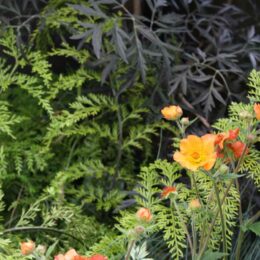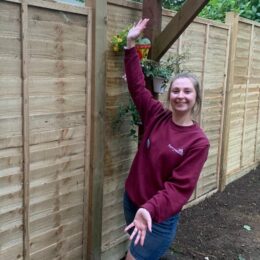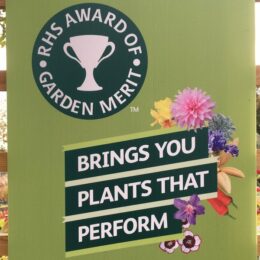As gardeners, we can do our bit for the environment by growing sustainably and lowering carbon emissions. Plant long-living borders, stop mowing your lawn (or mow less often), make your own compost, or collect rainwater, all these things can help combat climate change.
Managing a Low Carbon Border
When planting your garden borders it’s good to focus on plants that you’re going to keep there for a long time. Replanting disturbs carbon that has been stored, the less you replant the more carbon can stay locked under the soil. Try growing trees, evergreens, and perennials that have year-round interest for you to enjoy.
Spring
- Remove any dead foliage from evergreen grasses or other plants.
- Dig up self-sown seedlings (be careful) and replant in any gaps to fill your borders.
- Top up mulches, you could add an extra layer of homemade compost.
Summer
- Support your top-heavy plants.
- Chop back summer and autumn flowering perennials to encourage growth and extra flowers.
- Deadhead to encourage extra flowering.
- Hoe weeds instead of digging them from the ground.
Autumn
- Get ready for winter by protecting your plants – use mulch and homemade compost.
- Leave fallen leaves on your borders, remove any that have fallen around other plants as this may encourage disease.
- Save seeds ready for sowing again in spring.
Winter
- Remove flower stems if they have collapsed.
- Maintain your trees and shrubs whilst they’re dormant.

Photo by GAP Photography
Growing Low Carbon Containers
If you don’t have a big garden or have a balcony you’re more than likely going to plant in containers. Potted plants still absorb carbon from the atmosphere. These plants rely on you for food and water so growing them effectively can help be more sustainable and lower carbon.
- To be more sustainable upcycle old pots or containers, try to choose a larger size so your plants can spread out.
- Use plants that are happy to grow in containers e.g. herbs, Skimmia, Clematis, Cosmos.

Cosmos

Skimmia
- Use a waterbutt or other types of containers to catch rainwater as you’ll avoid all the emissions involved in treating and transporting tapwater.

Photo by GAP Photography
- If you’re going to plant make sure they are going to stay permanently, the longer they are planted the more carbon is absorbed.
Make your own fertilisers as artificial can be a source of greenhouse gas emissions. Here are a few ideas:
- Nettle tea – Harvest young nettles and lay the leaves on the soil surface to break down slowly.
- Vegetable peelings – Half-fill a blender with peel, top up with water and whizz into a watery soup.
- Comfrey tea – Fill a bucket with comfrey leaves, cover with water leaving for six weeks. Dilute one part with twenty parts water before using.






